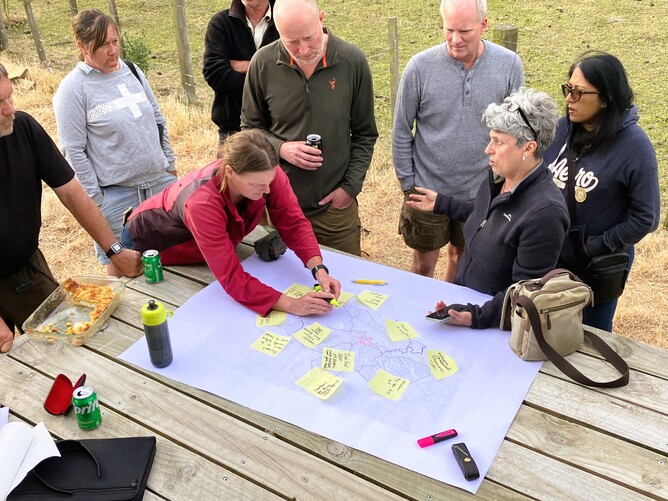John Hart, Partnership Lead
Over the past few years, farmer-led catchment groups have been making a real difference across Wairarapa.
At the heart of their progress is a simple but powerful tool: the catchment action plan.
These plans are more than just documents. They’re roadmaps that help communities turn ideas into action and visions into long-term change.
Supporting groups to create and deliver their catchment action plans is a core part of our role at the Wairarapa Catchment Collective.
Local people know their land and waterways best, but a structured plan ensures their energy and effort go into the areas where it will have the most impact.
A strong plan doesn’t just describe issues – it sets out practical steps towards solutions, guided by local knowledge and expert input.
For many groups, the planning process is as valuable as the finished plan.
It brings landowners together, builds shared understanding, and strengthens relationships.
Importantly, action plans provide a sustainable pathway forward.
They break down ambitious visions into achievable projects and create a framework for tracking progress.
The Tinui-Whareama catchment group is a good example.
With plenty of ideas, they risked spreading themselves too thin.
Working through the planning process helped them prioritise the projects that would deliver the greatest impact with the resources they had, while still setting a pathway for even more ambitious work in future.
Action planning is also central to the collective’s partnership with the Greater Wellington, Mountains to Sea Wellington, and the Ministry for Primary Industries’ On Farm Support team.
Together, we give groups access to technical expertise, connections, and resources to make their plans real.
It’s collaboration at its best – local communities setting the direction, supported by partners who amplify their efforts.
A great example is the collective’s regional pest management project.
During action planning, groups consistently identified pest animals as a key risk to biodiversity and farming.
This shared priority became the foundation for a co-ordinated regional project that is already delivering results.
With more than $40,000 worth of hardware supplied by Greater Wellington so far, groups now have the traps, monitoring gear, and expertise to start taking on pests strategically and at scale.
Catchment action plans also open the door to external funding.
Funders – whether government, industry, or philanthropic – want confidence that communities are organised and ready to deliver.
A clear plan shows exactly that. It’s why the Collective has already secured more than $100,000 in external funding for catchment groups across the region.
Those funds are now driving practical projects that restore streams, protect biodiversity, and build resilient communities.
The success of these projects proves what happens when planning meets action. Stream plantings, water quality testing, pest control, and farmer workshops all began as priorities within catchment action plans.
Each project is a step toward the bigger vision, and together they’re shaping meaningful change across the Wairarapa landscape.
The Wairarapa Catchment Collective will continue standing alongside local groups, guiding them through planning and connecting them with the resources they need.
Tīnui-Whareama Catchment Group action planning
